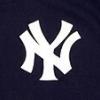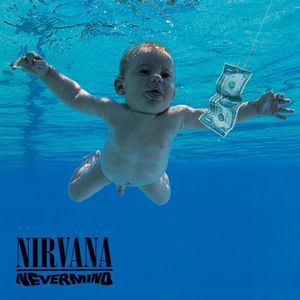-
Posts
21424 -
Joined
-
Days Won
82
Content Type
Profiles
Forums
Downloads
Everything posted by Yankee4Life
-
10 out of 10, 67 seconds. I had to flip a coin on question one.
-
7 of 10, 62 seconds. Blind luck.
-
8 out of 10, 95 seconds. I had to flip a coin on some of them.
-
Don't sell yourself short. You're pretty good.
-
6 out of 10, 70 seconds. These intermediate questions kill me.
-
I hope he enjoys it out there and makes the Yankees pay with their stupidity. I knew this would happen. Player to be named later??? How about another Andrew Heaney?
-
4 out of 10, 91 seconds. Ouch.
-
Agreed 100%. I just hope they bring him back quick.
-

Random Thoughts On A Sunday Morning Updated To 11-23
Yankee4Life replied to Yankee4Life's topic in Left Field (Off-Topic)
Updated to 11-21 ...Back in 2001 I got the very first X-Box for Christmas and I couldn’t wait until the spring when I could play baseball on it and also on X-Box live when that came out. I played many games against the guys from the old High Heat forum and I am not ashamed to say that those guys tore me apart. It suppose it was a good thing because of my work schedule that I was unable to play in the league they had because I would have had a nice, comfortable seat in last place looking up at them. The reason why I am bringing this up is that I played a game against a random user that happened to be on at the same time I was and I was anxious to play a game. This guy, from the first batter on until he up and quit in the fifth inning was doing nothing but going for home runs every single time. It was the easiest game I’ve ever played. I pitched inside, up and away, changed speeds, made him chase pitches, etc. In other words I tried to take a page out of the Greg Maddux book of pitching. I was leading 6 - 1 and before I recorded the last out in the top of the fifth this guy quit the game but not before telling me that I was “no fun.” I haven’t thought about this for twenty years but it came back to me one day after watching another frustrating Yankee defeat over the summer. I suddenly realized that the Yankees were playing like that anonymous user I played against. Everyone swing for the fences and let’s see what happens. Well, we all saw what happened. Good teams like Tampa Bay had a hard time hiding their smiles when they had to play the Yankees. Boston showed them how much better they were because they hit and ran and did the little things to win games and the Orioles, losers of 110 games were a respectable 8 - 11 against the Yankees in 2021, something that ended up costing them dearly because if the Yanks won a few more games against them they’d of been the ones to host the wild card game. But I am not writing this so I can come up with excuses. I will say this. This team managed to win ninety-two games somehow and aside from that thirteen-game winning streak that they had they were easily beatable because they always ended up beating themselves. I know I give Gary Sanchez a lot of grief and for good reason I may add but he’s not the only problem. Mention any position and you’ll see an issue. First base? Luke Voit did his best work this year on the disabled list. Outfield? Very thin. Aaron Judge is solid and when the dangerous Stanton is out there he’s a much better player. Pitching? Maybe if Luis Severino and Domingo German play the entire year it will make for a good staff. If the Yankees had any doubt about those two they would not have thought twice to looking at Justin Verlander, who hasn’t pitched in two years and is thirty-nine years old. He re-signed with the Astros and that’s a good thing because he is just the kind of player the Yankee front office can not resist - a name player who also happens to be past his prime. I am looking forward to spring training but not for reasons you might be. When it arrives it then it will be the middle of February and winter will have a little over a month to go. I don’t care what this team does as they get ready for the season and I won’t listen to the hype from the New York tabloids or Aaron Boone. Whatever he says I believe the opposite. I just want them to hit better, to go the opposite way, to hit and run, steal bases, etc. When you swing for home runs all the time you’ll get a few and also have some blowout games but you’ll also have a team that will strike out twelve times a game and won’t care one bit when it happens. ...It was a fun World Series to watch if you were a Braves fan or if you were someone who just wanted to see Houston lose. Just seeing Jose Altuve with a sad look on his face in front of the home crowd made it worth having Houston in the Series. Anyone who predicted that the Braves would win it let alone be in the Series were not following them too close for half the year. They had a losing record in July but since then they caught fire at the right time, won their division and then everything else to become champions. I give them credit because I am certainly not used to seeing that with the team that I follow. Speaking of the Yankees, or I should say only their team president Randy Levine made the news before the fourth game in Atlanta. It seems that insurrectionist instigator Donald Trump was planning on making a grand appearance at the game thanks to being invited by Levine the Commissioner of Baseball Rob Manfred. In typical Trump style he was never invited by either of them but he never lets the truth get in the way of a good lie. What actually happened was that he wanted to go to the game so he called the people at major league baseball and they said sure, why not? Trump had to make it sound as if baseball reached out to him first. I feel bad for the Braves that this blowhard had to show up at one of their games but at least he didn’t try to give a speech. Who knows, between innings or during a pitching change the thought had to cross his mind. ...If you have not been keeping up with the transactions that are coming out of the Bronx, New York, Clint Frazier has been designated for assignment. That means he can go get dizzy for another team for five months of the season. Rougned Odor was also given his walking papers and maybe he can find his way back to Texas and grow his beard again. Tyler Wade was also let go but I am hoping he comes back because I think he’s a talented player with a lot of speed and a decent bat. For Wade I think it is just a numbers game. The one I am really paying attention to is Gary Sanchez, he of the silent bat and the hole in his mitt. New York has until December 2nd to tender him another contract, which is projected to be worth nearly eight million dollars in arbitration which by my count is eight million dollars more than he’s worth. The Yankees did right by getting rid of Frazier. Now it’s time for Sanchez. ...The problem with Carlos Correa’s comment about Derek Jeter not deserving five Gold Glove awards is that the guy is probably right. I am one of those Yankee fans that does not kneel at the shrine of Jeter and thinks that everything he did on a baseball field was better than anyone else who has come before or after him. I get what the Jeter loyalists are saying, that he has lead the team to five championships, has the most hits of any Yankee, etc, etc. But his defense was always a question and Correa is hardly the first one to bring that up about him. He just happens to be the latest one to do so. This could cost Correa a chance to play in the Bronx but that may have been a very slim chance to begin with. ...They’ll never learn, Dept: Major League Baseball appears headed for its first work stoppage since the player’s strike that ended the 1994 season. A work stoppage beginning on December 2nd is almost certain - at least that is what many baseball writers and insiders are telling everyone. I don’t want it to happen and if they can get it settled before next Thursday that would be all that I would want for Christmas. But what if they don’t? Trust me, you’ll make it. You’ll be fine. I have to laugh when I think back about the player’s strike in 1981 that started in June of that year and wasn’t settled until August. Relatives called my house and asked my parents if I was ok because they knew I was a big baseball fan. They told them I was just fine, and I was. I found other things to do to pass my time while that was going on. Everyone did. Baseball should have picked up on that and realized that besides the ticket takers, the grounds crew and the vendors around the ball park, people had no trouble finding other interests, especially in the summer. In 1994 they did it again but that time it was even worse. A World Series was lost but we survived and if worse comes to worse we will do it again because the people who run baseball still do not understand that there are other things to do then watch a guy making twenty million dollars a year while still remaining miserable. Baseball is a captivating sport and should never be interrupted except with the coming of fall and the completion of the World Series but if it does then sadly so be it. Again, we will make it. For any of you who have not lived through a long lockout it is going to be very surprising to you how easy you’ll adjust while it’s going on. It’s not the first go-around for the players and owners and it won’t be the last. Baseball, sad to say does not have a engrossing hold on people anymore. In 2020 the series between the Dodgers and the Rays was the lowest rated and least-watched Fall Classic ever and this year's was just a little bit better. If they strike people will gravitate to the NFL and other sports or lose themselves in Netflix or Hulu. Talks of strikes, threats of strikes and the strike itself only turn more people away from baseball. Forty-one years ago John Lennon was shot to death and some fans were so upset about it that they committed suicide and Yoko Ono had to make an announcement to beg people to not go and take their lives because of her husband’s death. If baseball strikes, no announcement like this will have to be made. ...Another Worthy Lawsuit, Dept: An Illinois woman is suing Kelloggs because she claims that there are not enough strawberries in the company’s frosted strawberry-flavored Pop-Tarts and she is so upset and distressed about this that she has filed a five million dollar class-action lawsuit against them because, well, let me have her explain it. “Kelloggs gives consumers the impression the fruit filling in the strawberry Pop-Tarts contains a greater relative and absolute amount of strawberries than it does.” She also went on to say that more Americans are eating strawberries because they are one of the highest levels of nutrient density of all fruits and an excellent source of vitamin C. How do you like that? It’s so nice to know that there are people out there like this woman who are looking out for all of us. The lawyer or lawyers that heard her complaint and escorted her out of their office should be commended. The one who actually thought she had a case should be disbarred. Kelloggs has been producing Pop-Tarts since 1964 and aside from the amount of sugar that they pack in these things this is the first complaint I’ve ever heard about them. I honestly do not imagine how far she is going to take this suit or if someone is going to take her aside and tell her she is wasting her time and resources taking on this company because if it goes to trial Kelloggs will have a team of lawyers waiting to tear her apart as easy as one of those Pop-Tarts when you take it out of the toaster. Incidentally she was correct about strawberries because they are very nutritious and good for your daily diet but anyone who cares about nutrition would not buy Pop-Tarts in the first place. The next time you get a chance go to a corner store like 7-11 and look at the two-pack of Pop-Tarts that are sold there. There’s a lot of sugar in it and to make it even sweeter they’ve added an additional twenty-three grams of sugar on top of it. So what you are holding in your hand is two breakfast treats that add up to fifty-nine grams of sugar. There’s more nutrition in the wrapper than what’s inside it. ...Another Worthy Lawsuit, Dept (Part 2): In 1991 Nirvana released an album called Nevermind and on the cover of the album it portrayed a naked baby in a pool appearing to be fixated on a one dollar bill that is dangling in front of him (see attached image.) These were the days before Facebook and Twitter and any other social media platform that has ceased being social long ago and instead has become a sounding board for any and all complainers from Maine to California. Now, thirty years after the album’s release the baby who was on the cover, a man named Spencer Elden, is all grown now and is now trying to cash in any way he can. He is suing Nirvana because he now says the cover is “child pornography” and child sexual exploitation. The man’s attorney has now claimed that his client has suffered "lifelong damages" as a result of his involvement with being on the cover of the album. Of course he has. Now what is going to make all of lifelong suffering he’s had at the hands of these pornographers make him feel better and help him to live the remainder of his days in peace and happiness? An apology? For what exactly? It’s not like Nirvana went to a local mall, grabbed the first baby they saw and then threw him in a pool and took his picture. Permission had to be asked and then given from the parents and a fee was agreed upon. But this guy is claiming -with a lot of help from his lawyer- that he was sexualized because the dollar bill used in the image made the baby resemble "a sex worker." If that’s the case that is the cheapest sex worker on record. No, Elden is using the tried and true route. He wants money and a lot of it. Money will make him feel better and it will help him put all of this behind him. He has listed the surviving band members, the executors of lead singer Kurt Cobain's estate, and various record labels as defendants. He is seeking $150,000 in damages from each of the defendants, plus legal costs, and alleges the defendants "knowingly produced, possessed, and advertised commercial child pornography." Did you catch that? He wants money from all of these people plus he’s telling them to pay all the legal fees from a lawsuit that he started. The guy may have grown a bigger pair since that photo was taken but I hope Nirvana and company kick him so hard that his balls shrink back to their original size. ...My condolences to former Red Sox second baseman and broadcaster Jerry Remy, who passed away recently from lung cancer at the age of sixty-eight. I first saw him when he was playing for the Angels and when he got traded to the Red Sox before the 1978 season he worked well with shortstop Rick Burleson to give the Red Sox a very good double play combination. I don’t have many memories of him broadcasting because I hardly tuned into the NESN feed but I do have one of him as a player. It was in 1979 and my father and I took a bus trip to New York to see a three game series between Boston and the Yankees. I believe it was the second game that we went to that Remy lead off the game with a triple and then he hurt his knee on a play at the plate as he was trying to score on a ground out. He could not put any pressure at all on it and then Jim Rice came out of the dugout and carried him into the dugout and I presume into the Boston clubhouse. I don’t know how many games he missed after that but every time I heard the name Jerry Remy since that day I immediately flash back to a teammate of his helping him when he was hurt. R.I.P. ...I have a lot of respect for the People for the Ethical Treatment of Animals (PETA) and the work that they do because I am an animal lover who spoils his dogs every single day just so they are always well fed and at this time of year, warm. But when I heard that PETA, in all seriousness, asked baseball to change the term 'bullpen' to 'arm barn'. The reason? If you call it arm barn then it is more "animal-friendly." I didn’t know that animals are now watching baseball games and if so how do they feel about the possible strike? Maybe a bunch of angry grizzly bears can visit Rob Manfred to let him know how they feel. What I really think is going on is that someone at PETA came up with the idea, maybe the CEO’s daughter, and they decided to run with it. This suggestion is so stupid that even Twitter, who supports any kind of complaining and fault-finding, has not really been behind it. Then again, give them time. They’re probably still too busy digging into the lives of people who lived in the early twentieth century to see if they can find a reason to call them racist. ...Read the labels, Dept: I enjoy buying different coffee brands from Amazon to use in my Keurig machine and I’m partial to the dark roast coffees that they have. But that’s not the only kind I drink and every once in awhile I like a bit of flavor in the coffee. I am almost embarrassed to admit to doing this and going as far as writing it on here but when I was in Walmart a couple of days ago and I saw Aloha Coconut and Hazelnut Creme k-cup coffees. I was immediately interested and I thought that they both sounded pretty good to me but (these stories always have a but in them don’t they?) as I was reaching to get them I saw the company’s name on the box, Boston’s Best. I don’t have to tell you that I did not buy those two boxes of coffee no matter how good the coffee may have been. I don’t need any convincing about how crazy that may sound and it can also be pointed out by anyone who may or may not be a sports fan and also has no problem separating a hot cup of coffee from the baseball team even if the company is based in Boston. But I can’t. The way I see it the people who make this coffee are baseball fans they have to be Red Sox fans and I am not contributing one nickel to those fans at any time. I’ll stick to my usual Kauai Coffee because at least the people who make that coffee are people I’d shake hands with. ...Finally, the NFL Thanksgiving game schedule to help you plan your meal and nap time around. Leading off is the usual stinker with the Detroit Lions. They will be hosting the Chicago Bears at 12:30 p.m. Eastern time. The game will be on FOX and that’s ok because that will be the game Joe Buck is doing so we can get him out of the way early and enjoy the rest of the day. At 4:30 p.m. the Oakland Raiders go to Dallas to take on the Cowboys. This one will be on CBS and it should be a better game with better announcers. Finally if you have not passed out yet there’s one more game and it will be on NBC with the Buffalo Bills visiting the New Orleans Saints. That one starts at 8:20 p.m. Whether you watch them all or just one or none at all I hope you and your family have a happy Thanksgiving and a wonderful holiday season coming up. -
8 out of 10, 60 seconds. One I understand missing but I screwed up on the other one.
-
7 out of 10, 103 seconds. The only way I win today is if no one else plays. 😀
-
You guys are doing fine. Some of these questions are tough, especially the ones not about baseball. Today was about baseball and it was the easy category. 10 out of 10, 69 seconds. Question 1 today...check the chat box in the quiz area. 🙂
-
Great job man! I have to admit I have been getting lucky on a lot of the questions.
-
8 of 10, 75 seconds. I got very lucky in my guessing.
-
7 out of 10, 83 seconds. Questions 5 and 8 are the same, only worded differently. Hint: He is a shortstop for the Cardinals known as the wizard.
-
7 of 10, 76 seconds. I have to admit here I got lucky. Four of the questions I got right I had to guess.
-
7 of 10, 100 seconds. The answer to question 3 is the Brewers. I got it wrong.
-
10 out of 10, 53 seconds. When these people have an easy baseball quiz they really mean an easy baseball quiz. They practically gave you question 1.
-
6 of 10, 82 seconds. I'm not that good.
-
I got lucky today 10 out of 10, 64 seconds.
-
5 out of 10, 66 seconds. Another sub-par one for me.
-
What Laroquece? You didn't get that question right? Wow. 🙂 Today, 8 out of 10, 80 seconds. That will be beat easily.
-
6 out of 10, 60 seconds. If you guys don't get question three right I don't know what to say.
-
Watch him win 16 games. 😕




